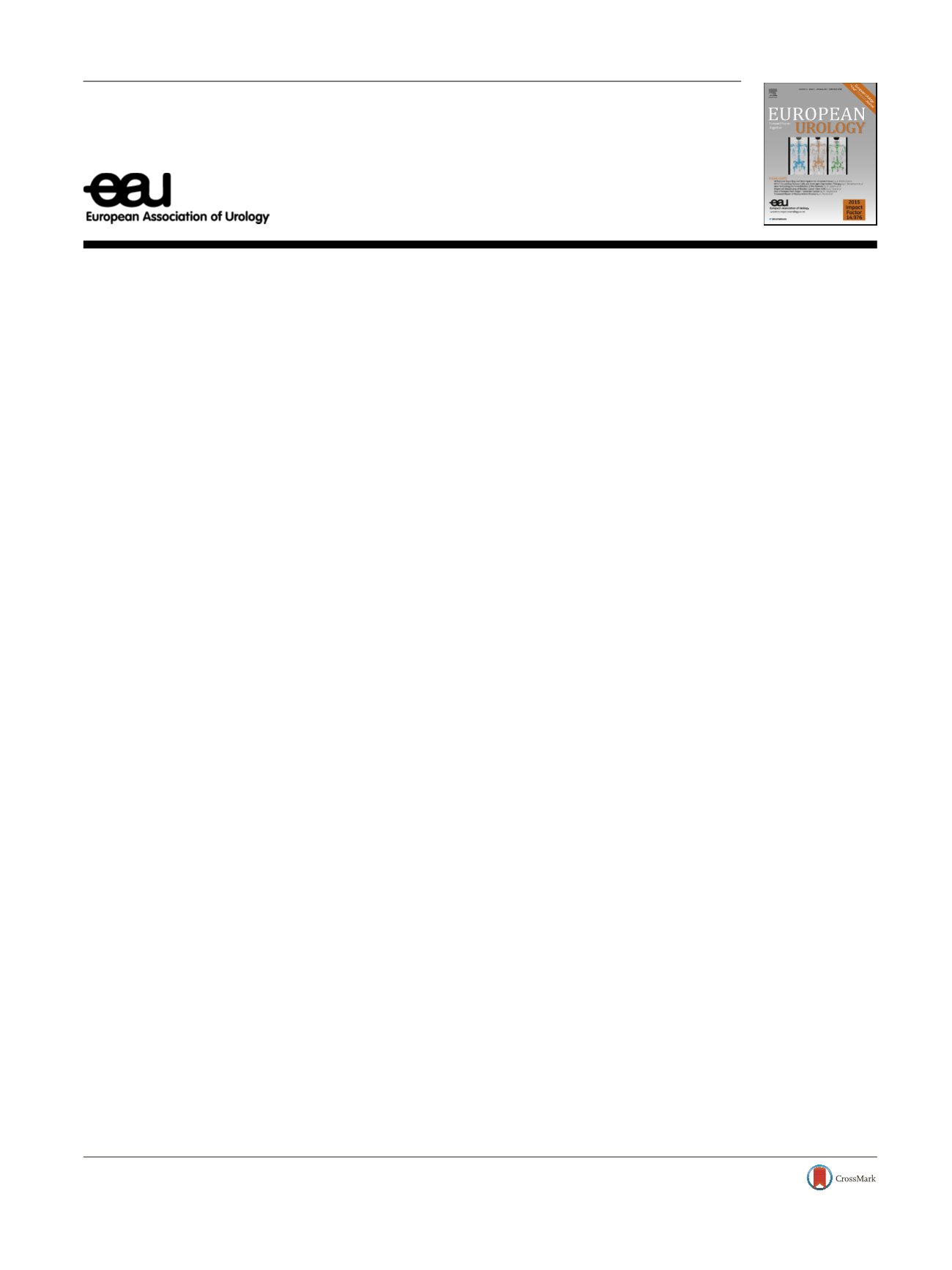

Letter to the Editor
Reply to Jae
[1_TD$DIFF]
Heon Kim and Benjamin I. Chung’s Letter to
the Editor re: Maria Carmen Mir, Ithaar Derweesh,
Francesco Porpiglia, Homayoun Zargar, Alexandre
Mottrie, Riccardo Autorino. Partial Nephrectomy Versus
Radical Nephrectomy for Clinical T1b and T2 Renal
Tumors: A Systematic Review and Meta-analysis of
Comparative Studies. Eur Urol 2017;71:606–17
We appreciate the thoughtful commentary by Kim and
Chung regarding our recent systematic review and meta-
analysis
[1]
. Three issues have been raised, and we would
like to thank the Editor for giving us the opportunity to
briefly address them.
First, as stated in our methods section, we searched only
for studies comparing partial nephrectomy and radical
nephrectomy in the subgroup of patients with larger renal
masses (pT1b or T2). Another (implicit) key criterion for
inclusion was the availability of ‘‘extractable’’ data in each
of these studies that could be computed for the analysis. The
study by Pinot et al
[2]
is certainly a remarkable one, given
the sample size, for which the findings can certainly
contribute to the ongoing discussion. However, the review
of the full text of that study revealed the authors did not
provide comparative outcomes specifically for the ‘‘larger
tumors’’ group, and therefore data from that study could not
be included. However, another earlier study by same the
group (and this one included almost 1000 cases) was
included in our meta-analysis (ref. [39]), as data for analysis
were indeed available for this earlier study
[3] .As we clearly
stated in the conclusions, our findings should be ‘‘critically
interpreted within the constraints and limitations of this
type of pooled analysis’’, and we would like to reaffirm this
point. One of these limitations is that you can only include
studies for which data are available for extraction.
Second, a methodological issue has been raised regarding
our adoption of ‘‘fixed’’ versus ‘‘random’’ effects model,
whereas, according to our colleagues, a better option could
have been exclusive use of a ‘‘random’’ effects model. While
many argue that such a model might more effectively
account for hidden heterogeneity, it is also true that it has
intrinsic limitations
[4]. We opted to use a ‘‘flexible
approach’’, as others have previously done in several
meta-analyses published in
European Urology
[5]. In general,
we recognize that the adoption of one model over the other
is still a matter of debate among statisticians, and certainly
none can be deemed as optimal, as there are pros and cons
with both
[6].
We agree with the authors that the landscape of nephron-
sparing surgery has completely changed over the past 5 yr
with the dramatic uptake of robotic partial nephrectomy in
most centers worldwide. The lack of many comparative
studies with robotic surgery might be explained by the fact
that radical nephrectomy is still primarily carried out using
standard laparoscopic techniques in most centers. Certainly,
this can be regarded as a gap in the literature. In this regard,
we recently reported another meta-analysis in which we
assessed the outcomes of minimally invasive (laparoscopic
and robotic) partial nephrectomy for large renal masses
[7]. Overall, 13 case-control studies were included. We
concluded that minimally invasive partial nephrectomy
represents a viable treatment option for renal masses larger
than 4 cm (higher than cT1a), but a higher risk of
complications should be expected.
Finally, the authors suggest other type of studies that
could be performed, among them a comparison between
partial nephrectomy and radical nephrectomy without
discrimination regarding staging. This would represent an
updated version of the widely referenced meta-analysis
reported by the Mayo Clinic group in 2012
[8] ,and it would
certainly be interestingwork to do. However, this was not the
aimof our study, whichwas conceived to answer the relevant
clinical question: is partial nephrectomy an acceptable
option for larger renal masses or should it be performed
uniquely in small renal masses?We hope to have contributed
to the ongoing discussion on this, but we certainly realize
that the ‘‘jury is still out’’, and further efforts are required,
such as a well-designed prospective multicenter study.
Conflicts of interest:
The authors have nothing to disclose.
References
[1]
Mir MC, Derweesh I, Porpiglia F, Zargar H, Mottrie A, Autorino R. Partial nephrectomy versus radical nephrectomy for clinical T1b and T2 renal tumors: a systematic review and meta-analysis of comparative studies. Eur Urol 2017;71:606–17.
[2]
Pignot G, Mejean A, Bernhard JC, et al. The use of partial nephrec- tomy: results from a contemporary national prospective multicen- ter study. World J Urol 2015;33:33–40.
E U R O P E A N U R O L O G Y 7 2 ( 2 0 1 7 ) e 1 2 9 – e 1 3 0ava ilable at
www.sciencedirect.comjournal homepage:
www.eu ropeanurology.comDOIs of original articles:
http://dx.doi.org/10.1016/j.eururo.2016.08.060,
http://dx.doi.org/10.1016/j.eururo.2017.05.017.
http://dx.doi.org/10.1016/j.eururo.2017.05.0100302-2838/
#
2017 European Association of Urology. Published by Elsevier B.V. All rights reserved.
















